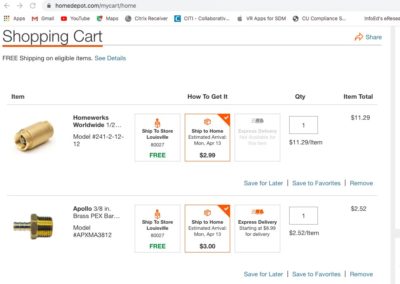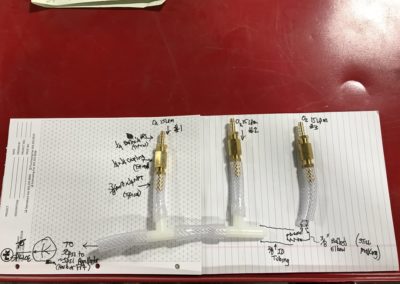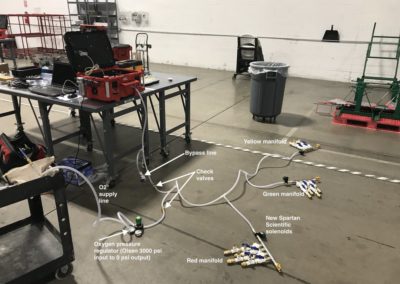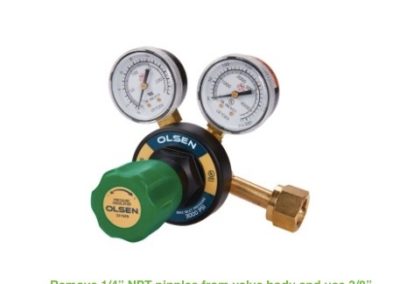Build Rev 2
Adding 100% oxygen to the air supply tubingIn most situations of emergency respiratory ventilation, whether invasive or non-invasive, it is desirable to be able to blend 100% oxygen with room air to facilitate respiratory gas exchange and oxygenation of a patient’s tissues. Although this capability was added to the prototype, none of the valves used in the prototype were oxygen cleaned; and we had not yet added O2 pressure regulation. With Rev2, we substituted oxygen cleaned solenoid valves (with much better service life rating); and used appropriate detergent cleaners on the check valves. We also added the Olsen oxygen pressure regulator to the parts list and an air “Bypass line” to better control FiO2. Pick up a medical low pressure gage that reads cm H2O or millibars to evaluate port pressure at the point of patient circuit attachment. Although it adds cost to the unit, it may be advisable to add an inline oxygen meter to the manifold supply line downstream of the blend location to measure FiO2 directly (e.g. may want to evaluate Model MO-200 Oxygen meter and inline sensor by Apogee Instruments, Inc., in Utah).
Legal Disclaimer
The content on this website is being released in this manner to maximize the potential public benefit during this urgent need for measures to respond to the COVID-19 crisis, including promoting potential ventilator manufacturing methods.
The content has not been reviewed or approved by the U.S. Food and Drug Administration (FDA). Interested readers are encouraged to contact the FDA and review available FDA materials, including their guidance on ventilators as well as the Department of Health and Human Services (DHHS) declaration of liability immunity for medical countermeasures against COVID-19.
PLEASE NOTE: The content has not been peer reviewed. The Authors make no representations or warranties of any kind (express or implied) relating to accuracy, safety, usefulness, usability, marketability, performance, or otherwise of the content released here. The Authors disclaim all express and implied warranties of merchantability and fitness of the content for a particular purpose, and disclaims all express and implied warranties regarding non-infringement of any patent, copyright, trademark, or other rights of third parties in the content or use of the content, or in the making, using, or selling products or services by any person or entity.
People or entities attempting to use the content in any way, including creating products or offering services, assume all risk and responsibility related to those uses, including all legal and regulatory compliance, safety, efficacy, performance, design, marketability, title, and quality. The Authors assume no liability related to the actions of third parties and in respect of any infringement of any patent, copyright, or other right of third parties.
The content has not been used in testing with humans at this time.
The Authors’ names and logos are trademarks or other exclusive property of the Authors. Readers of the content shall not use the name or logo of any Author in any way for publicity, advertising, or other commercial purposes, including linked to the reader’s products or services. Readers of the content shall not make statements or representations that, in Author’s sole judgment, deliberately or inadvertently claim, suggest, or give the appearance or impression of a relationship with or endorsement by that Author.
The Authors are proud of their affiliation with the University of Colorado as alumni and, in the case of Dr. Thomas Greany, as a professor at the Anschutz Medical Campus. The Authors express their appreciation to the University of Colorado for its support of this project.






